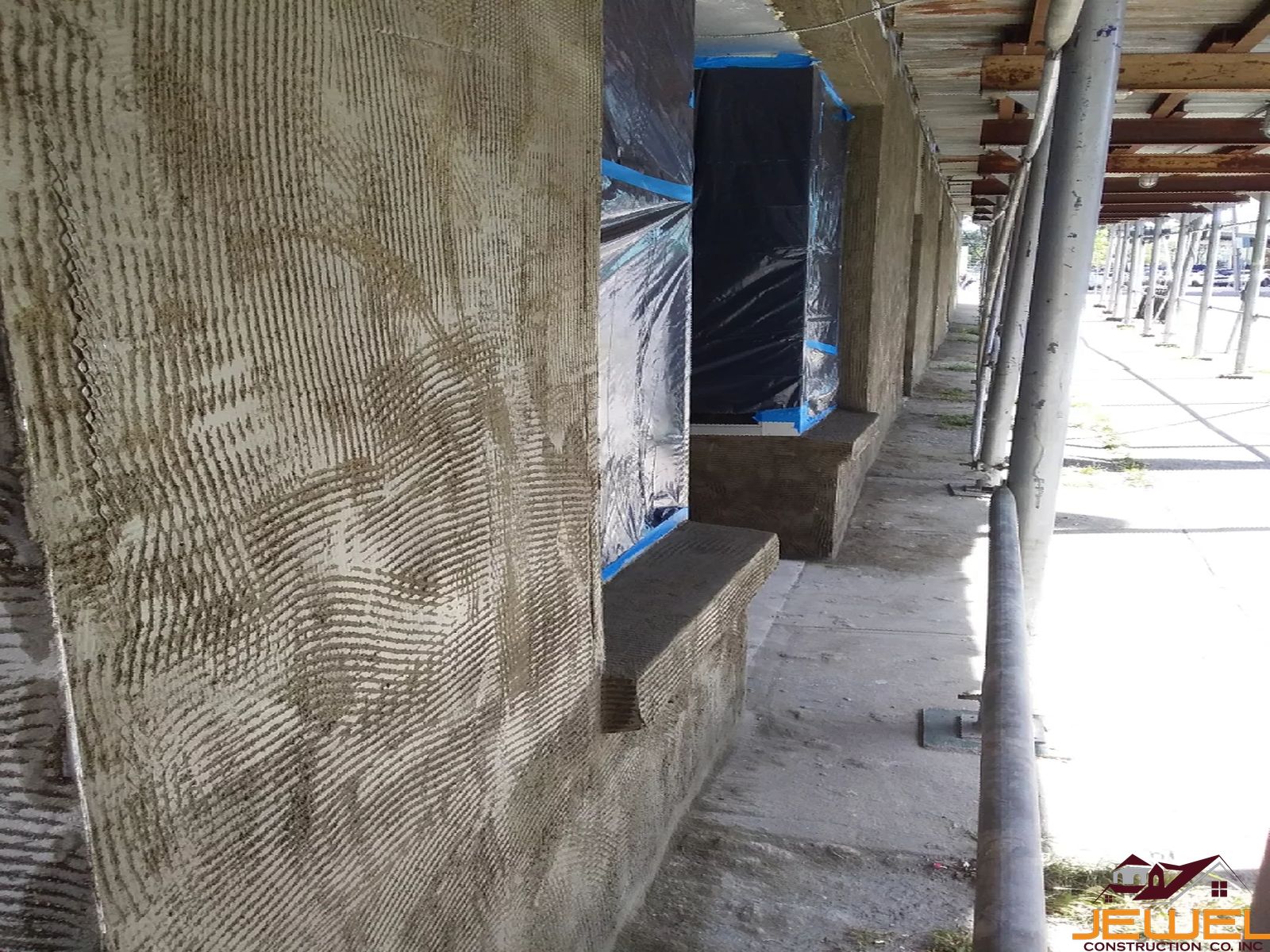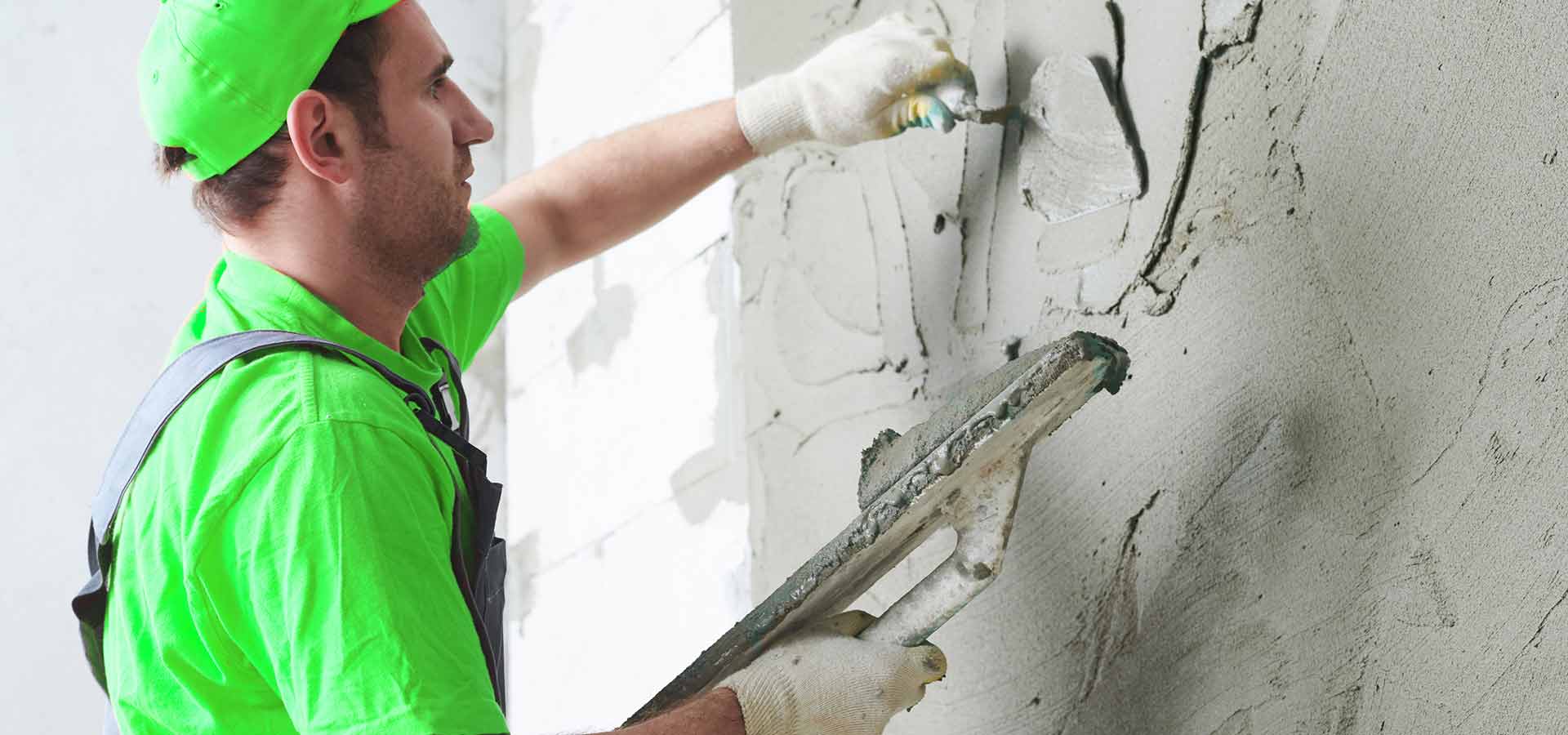Secret Inquiries to Ask Prior To Working With a Stucco Contractor for Your Task
Secret Inquiries to Ask Prior To Working With a Stucco Contractor for Your Task
Blog Article
Checking Out the Adaptability of Stucco in Modern Architecture
Stucco has long been recognized for its visual charm and adaptability, yet its role in modern-day design warrants a more detailed assessment. This product, historically significant in different building movements, now works as a versatile service that enhances both the functional and aesthetic aspects of modern frameworks. By discovering its cutting-edge applications, from striking facades to energy-efficient designs, one can appreciate how stucco is redefining the boundaries of architectural expression. This conversation will certainly discover not only its transformative potential yet likewise the difficulties it encounters in a progressing market.
Historic Value of Stucco
The historic relevance of stucco is profound, as it has actually played a critical function in building techniques across different societies for centuries. Coming from in ancient people, stucco was made use of by the Egyptians and Greeks as a functional and durable finish for both interior and external surfaces. Its flexibility to different climates and capability to imitate a lot more expensive products made it a popular selection.
In the Roman era, stucco became a key attractive aspect, made use of thoroughly in public structures, vacation homes, and holy places. The Romans fine-tuned the application strategies, enabling detailed designs and relief sculptures. During the Renaissance, stucco experienced a revival, particularly in Italy, where it was employed in ornamental information and sophisticated exteriors, showcasing the creativity of the duration.

Modern Applications in Style
Stucco has actually discovered restored importance in contemporary design because of its convenience and aesthetic charm (stucco contractor). This typical product is significantly utilized in contemporary style, linking the space in between traditional and modern looks. Architects and designers appreciate stucco for its versatility, enabling it to be applied in numerous designs-- from minimal structures to specify Mediterranean layouts
In property projects, stucco supplies a clean, seamless surface that boosts the aesthetic communication of exteriors. Its capacity to adapt to various forms and surface areas makes it an optimal selection for both new building and constructions and remodelling jobs. Additionally, stucco's toughness and reduced upkeep demands add to its growing appeal in city setups, where durable products are crucial.
Industrial applications have also embraced stucco, with several businesses choosing this material to develop welcoming and distinct storefronts. The use of stucco in public structures, such as colleges and area centers, showcases its potential for producing visually appealing atmospheres while giving superb insulation residential properties.
Color and Texture Advancements
Exploring shade and appearance advancements in stucco has opened new methods for engineers and developers, enhancing the product's aesthetic effect in modern-day building. Recent advancements in pigment technology have permitted a wider range of colors, making it possible for designers to create striking exteriors that integrate flawlessly with their environments or stick out as strong architectural declarations. This flexibility in shade selection offers engineers the ability to stimulate particular psychological feedbacks and harmonize with local appearances.
Structure advancements have in a similar way transformed stucco applications. Methods such as shoveling, spraying, and stamping have led to diverse surface area finishes, ranging from smooth and fine-tuned to tactile and tough. These variants not just add to the building's personality but also play an essential function in light interaction, enhancing the aesthetic deepness and dimensionality of surface areas.
Furthermore, the intro of artificial stucco choices has broadened style opportunities, offering improved toughness and climate resistance while keeping visual appeal. As designers proceed to try out cutting-edge shade palettes and textured coatings, stucco remains a critical aspect in modern-day architecture, showcasing the material's versatility and classic importance in modern design.
Sustainability and Energy Effectiveness
Technologies in shade and appearance have not just boosted the visual allure of stucco however also led the way for greater concentrate on sustainability and energy effectiveness in modern-day style. As ecological problems come to be significantly prominent, the building industry is turning its attention to materials that add positively to environmental balance.
Stucco, composed mainly of natural materials such as sand, concrete, and lime, offers a lasting choice to even more resource-intensive structure products. Its long life and durability reduce the requirement for regular replacements, thereby reducing waste and resource intake over time. Moreover, contemporary stucco formulations often consist of energy-efficient ingredients that improve insulation residential or commercial properties, lowering heating and air conditioning expenses for structures.
The reflective qualities of stucco can additionally be engineered my sources to reduce heat absorption, adding to cooler indoor settings and much less reliance on man-made environment control systems. By promoting power conservation and lowering the carbon footprint of frameworks, stucco lines up with the principles of lasting style. As builders and designers adopt cutting-edge methods and eco-friendly practices, stucco attracts attention as a liable and functional choice in modern layout.

Situation Researches of Stucco Projects
The convenience of stucco as a structure product is exhibited in various successful architectural projects that highlight its visual and practical advantages. One significant example is the remodelling of the historic Casa de la Guerra in Santa Barbara, California. Using stucco not just preserved the building's Spanish Colonial Resurgence design but likewise boosted its resilience and climate resistance, guaranteeing long life while preserving architectural honesty.
Another engaging situation is the contemporary domestic job, the Cactus Home in Scottsdale, Arizona. stucco contractor. This striking home features a smooth stucco finish that balances with the surrounding desert landscape. The stucco's light color mirrors warmth, adding to energy efficiency, while the textured surface areas include visual rate of interest
In Addition, the Kings Cross redevelopment in London showcases the versatility of stucco in city settings. The application of stucco on contemporary mixed-use structures creates a natural aesthetic that values historical context while accepting modern layout principles.
These study show how stucco can offer different building purposes, from preservation and power performance to aesthetic improvement, making it a versatile choice in contemporary style.
Verdict
 To conclude, stucco's historic value and modern versatility make it a valuable material in contemporary design. Its ability to harmonize timeless aesthetics with innovative style, integrated with innovations in color and structure, improves its allure. Moreover, stucco's shielding properties contribute to energy effectiveness, while its sustainable attributes align with present ecological top priorities. As demonstrated with numerous study, stucco remains to play a crucial role in shaping the building More Bonuses landscape of the modern-day period.
To conclude, stucco's historic value and modern versatility make it a valuable material in contemporary design. Its ability to harmonize timeless aesthetics with innovative style, integrated with innovations in color and structure, improves its allure. Moreover, stucco's shielding properties contribute to energy effectiveness, while its sustainable attributes align with present ecological top priorities. As demonstrated with numerous study, stucco remains to play a crucial role in shaping the building More Bonuses landscape of the modern-day period. 
In conclusion, stucco's historic significance and contemporary adaptability make it a beneficial product in modern architecture.
Report this page